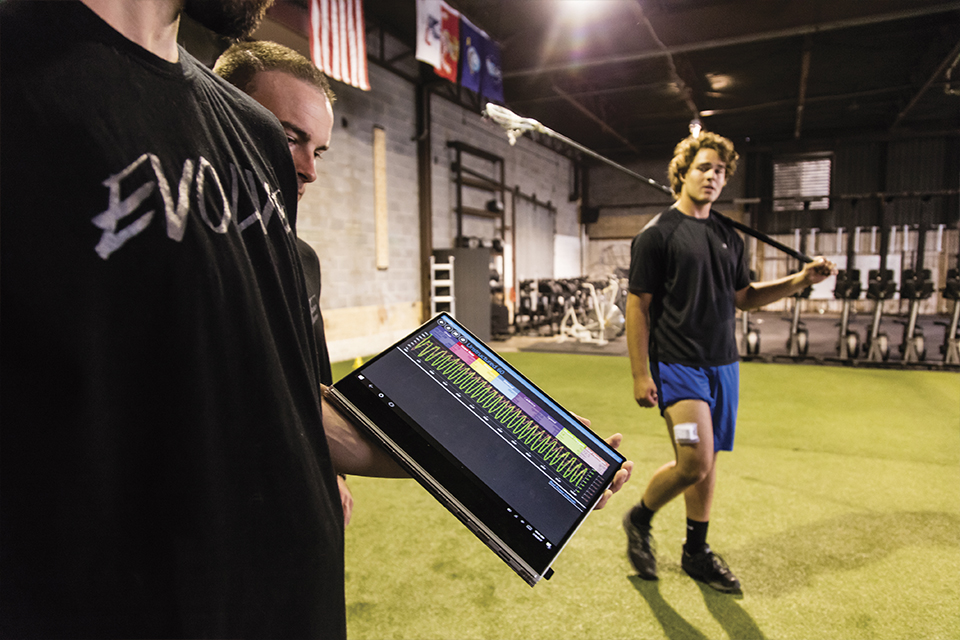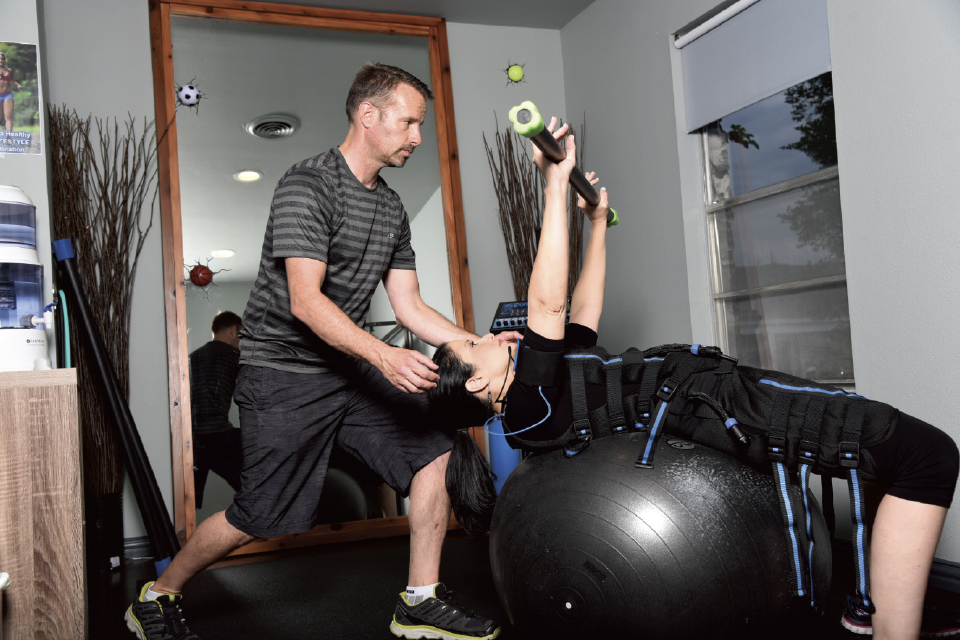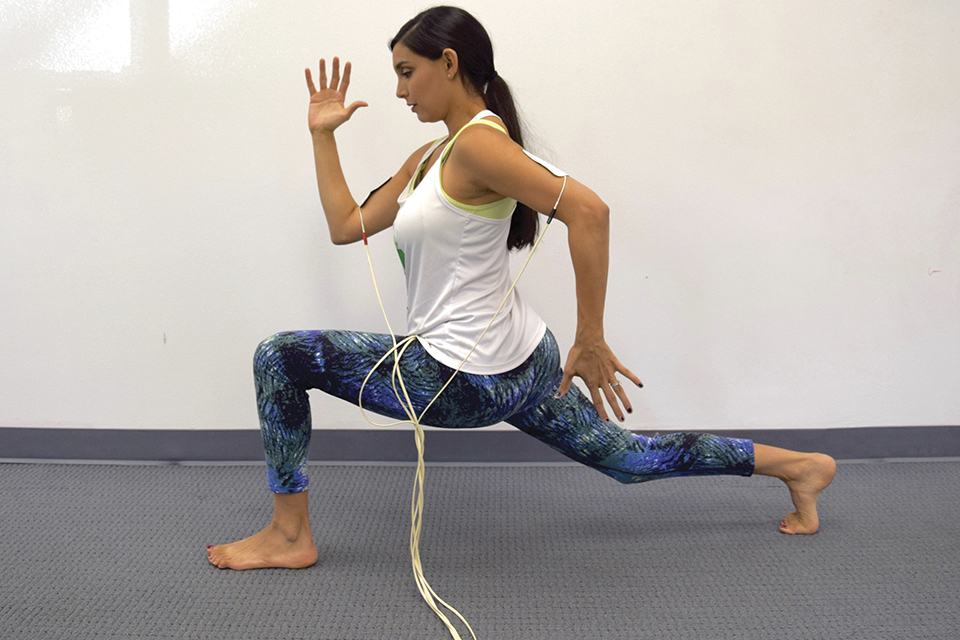Brawn From the Brain

Train. Adapt. Evolve
We’re told that there’s no “one-size-fits-all” diet plan, so why would you take the same approach to your training? At Train. Adapt. Evolve. (TAE) Aaron Davis and Patrick Estes are using advanced technology to bridge the gap between health and performance, starting from the inside.Through a series of tests, Davis and Estes can evaluate all benchmark levels of internal physiology, mobility, movement, and ability to recover, and then build a comprehensive blueprint for each client.
The first of these tests is the Omegawave, which gives the guys at TAE a snapshot of what’s happening inside the client’s central nervous system. By looking at how responsive the brain is, how well someone can regulate their behavior, along with metabolic function, hormone levels, and the status of autonomic functions, they can see what the foundation of health looks like. This data may also bring up some red flags that require further examination with blood work.
The second part delves into any orthopedic issues that could hinder a client’s training or performance. They do a 3D functional movement screen, check for hypermobility, and analyze gait to look for any areas in which intervention is necessary.
The following test involves a muscle oxygen (moxy) monitor to get real-time physiologic feedback from the client. The device produces a chart that shows saturation of muscle oxygen, total hemoglobin, and heart rate. These metrics allow TAE to identify exactly how the body is reacting to different outputs of activity, as well as how fast the body can recover from it. Most interestingly, it pinpoints where physiological compensations occur.
The complete report is just the beginning. Based on training goals and the data they’ve collected, TAE is able to give clients customized programming that caters to goals and allows clients to optimize their workouts.
What is electrical muscle stimulation (EMS)?
EMS is the use of electric impulses on the body to elicit muscle contractions. It challenges and stimulates the central nervous system, which can override voluntary responses that can hinder or slow down recovery or exercise. Normal, voluntary muscle contractions reach a limit—but with EMS, the electrodes sending electrical impulses can intensify that ability and give a more effective muscle contraction than it would with conventional training.
Austin Sculpt & Tone
The EMS machine at Austin Sculpt and Tone still taps into the central nervous system to work the muscles, but rather than placing sticky electrodes directly on the skin for localized spot training, it connects to a bodysuit. Paul Winsor recently moved his operation to Austin from Vancouver, where he owned a similar business. Winsor had been working with EMS for eight years in Canada, but when the FDA cleared the machine he uses to be employed as a fitness device, he moved to the U.S. to open up shop.
The EMS suit at Austin Sculpt and Tone has two electrodes per muscle group, covering abdominals, chest, middle back, lower back, glutes, hamstrings, quadriceps, triceps, and biceps (plus calves, per request). Clients are given a special pair of undergarments to wear under the suit—acting as a buffer between sweat and the EMS suit. The suit itself is made of an anti-fungal material and cleaned with a disinfectant after every use, too.
Once clients are (literally) strapped into the suit, Winsor can set and control the intensity of each muscle group. The machine contracts muscles for six seconds at a time, and then rests for three. A four or five on the 1-10 pain scale is recommended at the beginning, but settings can change as the body gets accustomed to the feeling. From there, Winsor instructs a 20-minute workout session that hones in on all muscle groups through exercises like lunges, bicep curls, sit-ups, deadlifts, squats, and more. In this short period of time, you’ll feel like you just worked out for far longer than that. Soreness can be expected—or practically guaranteed—in the days following.
Exercising with EMS increases the benefits, but for those who don’t feel like working up a sweat, the option of putting on the suit and lying down is also available. (It’ll still tighten and tone the muscles.)
NeuFit
When Garrett Salpeter combined his passion for engineering with his interest in strength and conditioning, NeuFit (short for neurological fitness) was born. Since receiving his Ph.D. in neurophysiology, Salpeter has gained experience in using EMS to help clients achieve goals ranging from stroke rehabilitation to competitive bodybuilding preparation.
NeuFit is organized by two disciplines: rehabilitation and training. Although many clients initially come in for injury treatment, they often transition to the personal training side once they’ve healed.
Through a series of manual tests, the team is able to evaluate and identify compensation patterns that the body may have adopted from trauma of surgery, or any other habits that prohibit the function of certain muscle groups. Part two of rehabilitation incorporates the EMS machine to accelerate the biological processes of tissue healing, leading to a faster recovery. In some cases, injuries that typically take about seven months to heal from will only take three and a half using this method.
Clients who come to NeuFit for personal training also see equally dramatic results. The EMS machine is a safe and controlled way to exercise, while giving an intense challenge on a muscular level. It increases the amount of work happening on a metabolic level and in turn, serves as a fat burning stimulus.
“What makes this so different and unique, compared to other electrical stimulation out there, is the pulsed direct-current—as opposed to alternating currents—so it most closely approximates the same dynamics of neurological signals the body gives out on its own,” says Salpeter.








